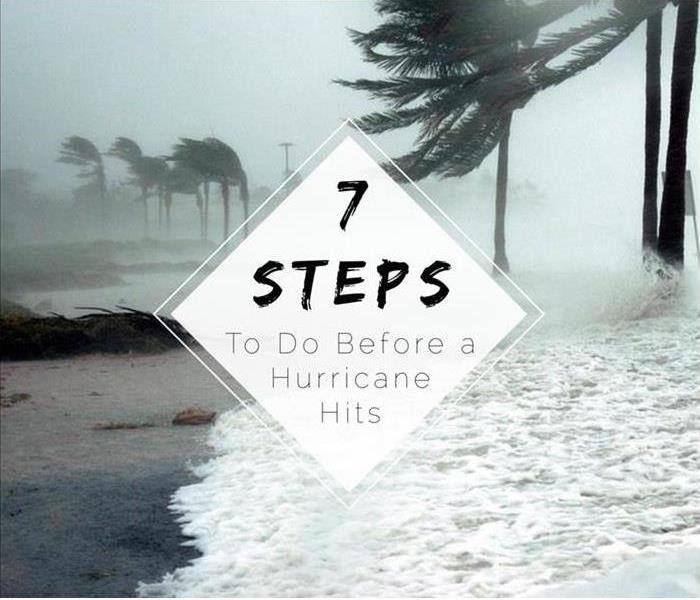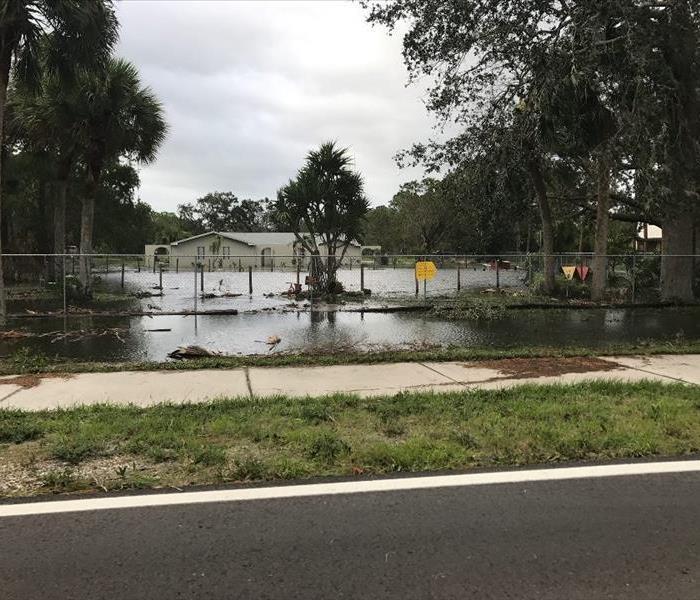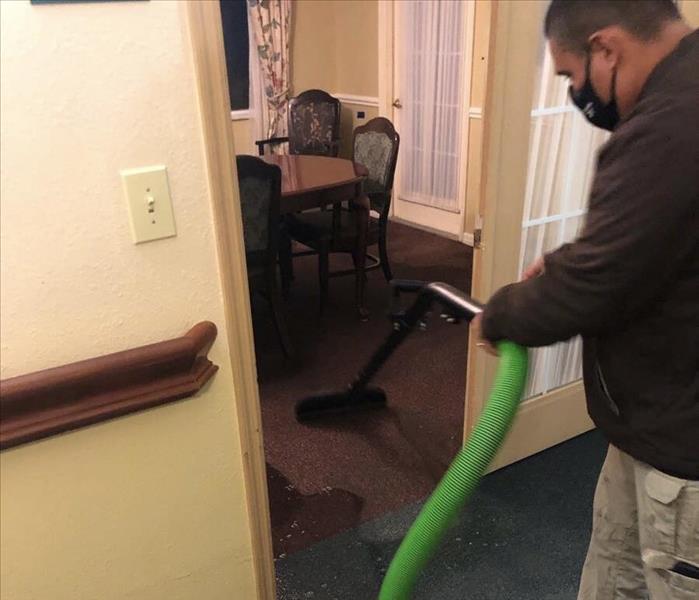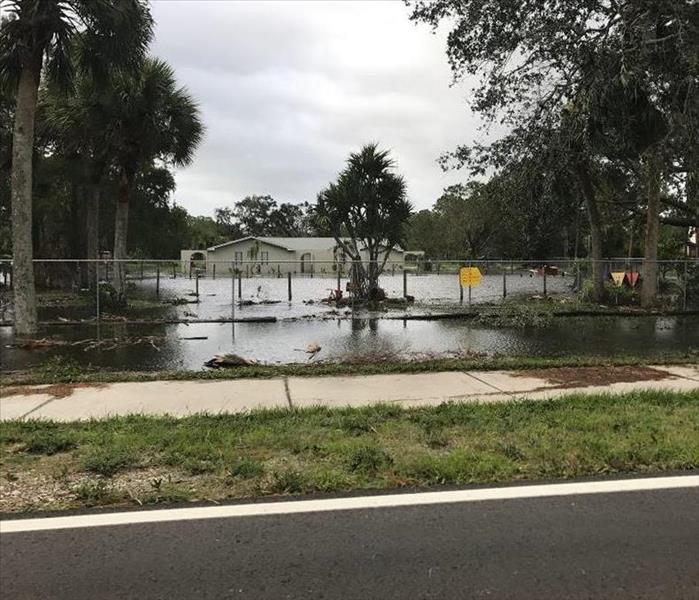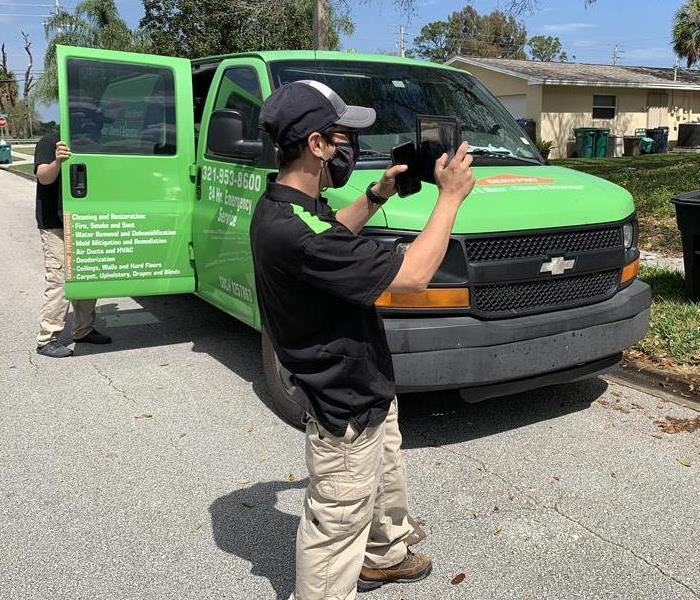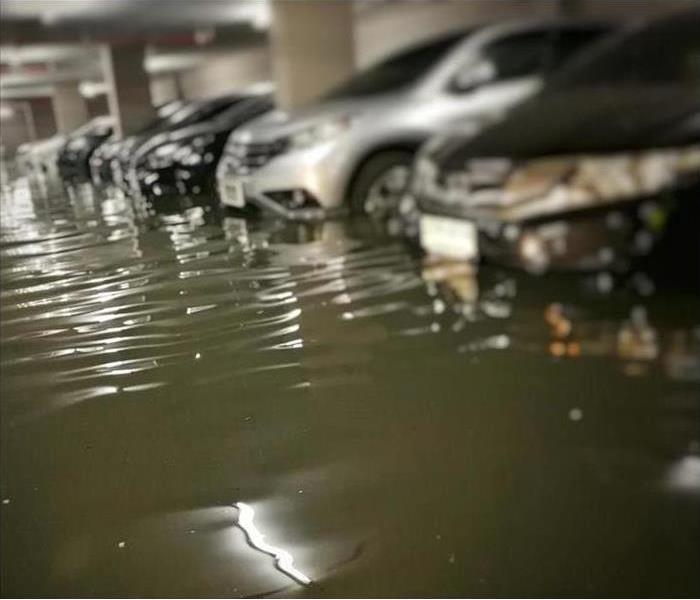Archived Storm Damage Blog Posts
What to Do After a Hurricane Strikes
7/25/2022 (Permalink)
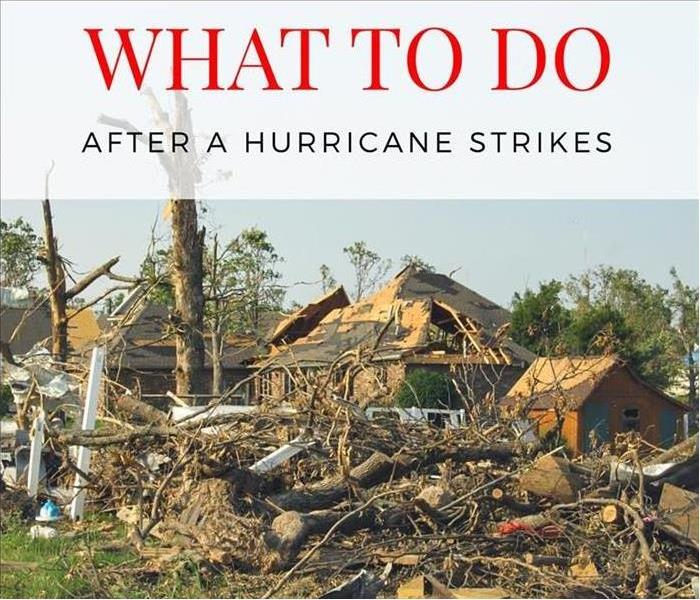 After a hurricane strikes your area, there are certain steps you should and should not take.
After a hurricane strikes your area, there are certain steps you should and should not take.
Hurricanes can be devastating, and to many Brevard County residents, Irma was just that. If your home had damages caused by the hurricane, here are the immediate steps you should take.
Photograph and Document Damage
Dealing with your insurance company is not always a walk in the park, but by documenting your damages, the process can go a lot smoother. Take photos of all damages, both inside and outside of your home. Also create a list of all damaged contents inside your home such as water damaged furniture.
Conduct Emergency Repairs
In many insurance policies, it suggests it is your responsibility to stop any future damages from occurring. For example, if you have a large hole in your roof, you need to place a tarp over the hole to prevent rain and other elements from causing further damages. Don’t make any permanent repairs until your insurance adjusters come out to reviews your home’s damages.
Secure Home Inventory
By securing your home inventory, this will help your claim process go much easier. A home inventory is a document detailing all your possessions in the home. Your inventory should include photos, detailed descriptions, and if possible, the item’s receipts.
File a Claim ASAP
If you experienced damages to your home from the hurricane, you should file a claim immediately. Be prepared to explain all the damages that occurred to your home in detail. This will help your insurance provider in starting your initial claim, and they can also provide you with some advice while waiting for your adjuster to come and assess the damages firsthand.
Secure Safe Lodging
If your home is damaged to the extent where it is no longer fit to live in, you will need to secure a place for you and your family to stay in the meantime. Check your insurance policy to see if you have coverage for temporary lodging while your home is being repaired. In standard homeowner’s insurance policy, this is typically covered as long as the overall damage to your home is part of the covered insurance claim.
5 Mistakes To Avoid With Flood Cleanup
6/30/2022 (Permalink)
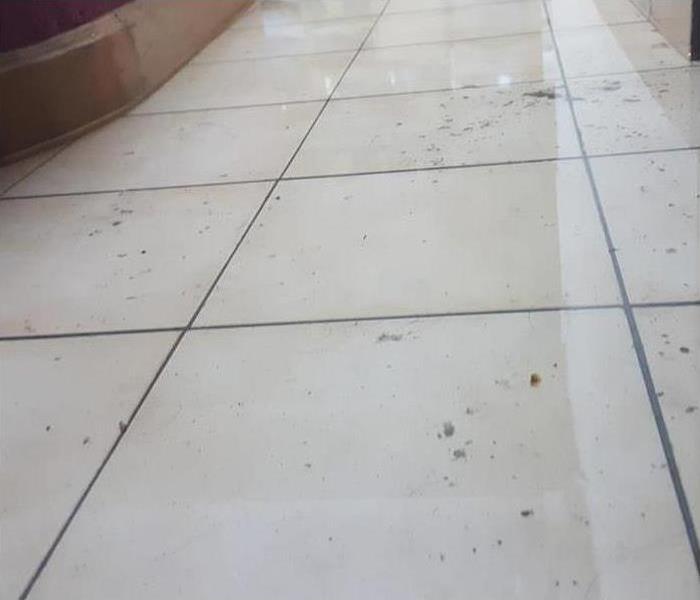 SERVPRO of West Brevard is here to help after water damage.
SERVPRO of West Brevard is here to help after water damage.
When flood water makes its way into your Melbourne, FL, home the thought of making repairs may seem overwhelming. However, there are few things that you won't want to do in such a situation. Here are five mistakes you should avoid when restoring your residence.
1. Don’t Wait To Make Repairs
One important thing to remember with a flooded home is not to wait to make repairs. Taking care of any restoration needs quickly can help prevent future problems.
2. Don’t Try To Do it All Yourself
Another thing to remember is not to try to perform the clean up all by yourself. A local flood damage restoration service often has the tools and equipment necessary to perform the job safely and quickly, and ensure the repairs are up to coding standards.
3. Don’t Ignore Safety Recommendations
When dealing with flood water it's important to observe all the safety recommendations. This may include reading the instructions for any equipment that you intend to use, as well as wearing proper safety gear such as masks, boots, coveralls, gloves, and even shoe covers.
4. Don’t Think Cleanup is Done Once the Water is Gone
Also remember that even though the flooding has been removed, the cleanup process itself may not yet be done. Water damage can persist even after the water is gone, and it's important to have an inspection done to look for any areas where structural integrity might be compromised, or mold may have set in, in order to get these properly remedied.
5. Don’t Forget To Talk To Your Insurance
It's also important to remember to talk to your insurance company. Your homeowner's policy may contain coverage for storm damage, and in many cases they may even recommend a restoration service.
When it comes to removing flood water and restoring your home, it's important not to wait to make any repairs. Don't try to do it all yourself, follow safety recommendations, and remember that even though the water is gone clean up may not be completed. Also, don't be afraid to talk to your insurance as they may be able to help.
7 Steps in Preparing For a Hurricane
6/22/2022 (Permalink)
Even though hurricane season has just begun, it’s never too early to prepare. Unless you prefer to rush to several different stores and stand in hour long lines, within hours of the hurricane actually hitting. I know I’d rather not do that! I’ve been in that situation, and let me tell you, it is not fun.
Instead, follow these 7 steps you should take before a hurricane hits.
1. Stay Informed
Make sure you know what is going on with the hurricane. Such as, what is the category of the storm, will it be hitting your area directly, if so, what time? Make sure to know your county’s evacuation route, and customize your evacuation plan for your family specifically. The hurricane’s course is never set in stone, so be sure to establish a back-up plan for every scenario. There are great phone apps you can download and utilize while preparing your family’s hurricane plans and staying informed. Click Here to learn more about these apps.
2. Make a Hurricane Preparedness Checklist
Be sure that you create a checklist of supplies that is specific to you and your family and then more general supplies. Click Here
3. Do you have Hurricane Shutters?
Be proactive! Hurricanes are known for causing damage to houses, and the first thing that’s usually damaged is your windows. Florida Home Builders know this and sometimes provide hurricane shutters to new homes. Make sure to check and see if yours has or not. If not, you can purchase shutters or you can pre-cut boards for your house windows.
4. Have a Backup Power Source
During hurricanes, it is likely that power lines get damaged or fall down, causing many people to go without power after the hurricane. It can take several days to several weeks for your local power company to repair the power line and get power up and running again. Because of this, it is a good idea to have a generator. Remember that they need gas to run and they are quite noisy.
5. Have at least 2 weeks of water and non-perishable food
FEMA recommends that each household has 2 weeks of food supplied. Hopefully you will not need to 2 weeks worth of food, but disasters do happen, and hurricanes can change on a flip of a dime. It is always best to be over prepared than under prepared.
6. Know How to Cook Without Electric
Without electric it can be hard to cook or warm up some of your food; considering this day of age, we rarely cooks without electric. But instead of trying to figure out how you are going to heat up the can foods you stocked up on, decide this issue before hand. Here are some ways you can cook without electric.
- Fireplace
- Canned heat
- Camping stoves
- Grills- propane or charcoal
7. Remember to Relax and Stay Calm
Being relaxed and calm during disasters are much easier when your family and you are prepared for any kind of scenario a hurricane throws your way. Come up with some ideas and activities that can take your mind off of the storm or its aftermath. Pull out those dusty board games in your closet and take out the stack of books you’ve been meaning to get to. This should preoccupy you and your family, and give you some quality time together.
Cell Phone Emergency Alerts
5/30/2022 (Permalink)
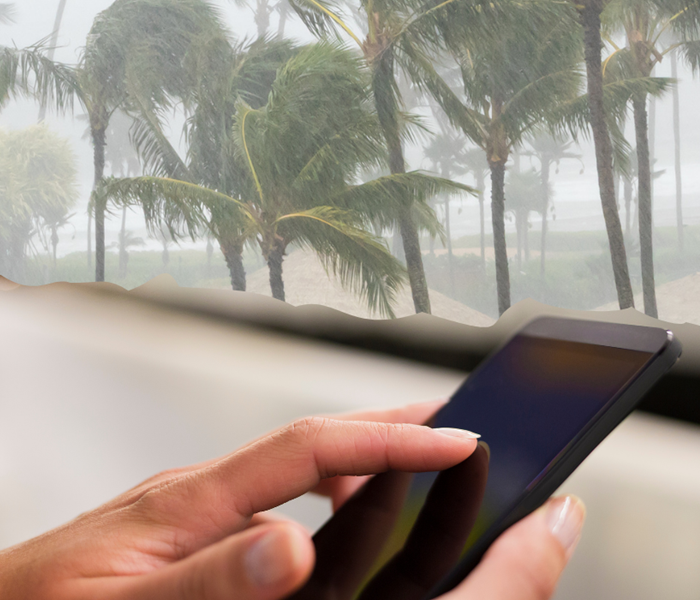 Did you know that your cell phone could possibly send a text, that could potentially save a life?
Did you know that your cell phone could possibly send a text, that could potentially save a life?
Technology has come a long way! The only way you used be able to receive Emergency information was by radio or television, but there is a better way and that is your cell phone.
Everyone has a cell phone, right? In this day and age, we couldn’t imagine anyone not owning a cell phone; it’s practically unheard of. More people own a cell phone than a car or a TV, and could you blame them? You can watch TV or catch a ride from your phone in minutes. In 2002, only 62% of U.S. adults possessed a cell phone, and that percentage increased to 95% of Americans in 2020. Today, cell phones are used for more than just to make calls. Cell phone capabilities aren’t what they were 10 or even 5 years ago. New technology has helped make our cell phone do practically anything, from GPS services to video chat, to web surfing, and to virtual reality.
Now knowing this, what is the best and quickest way to notify Americans in case of a major emergency? I would suggest, through our cell phones! You can be warned of upcoming dangers by emergency alerts from anywhere, while choosing how you’d like to receive them from your cell phone. The ability to be warned of oncoming dangers at a moment’s notice can provide you with a jump-start to safety. Here are 4 different ways to set up your emergency alerts from cell phones.
- National Updates
Receive updates regarding National Security from Homeland Security, the latest outbreaks from CDC, and computer threats from US-CERT. These notifications are issued through WEA- Wireless Emergency Alerts. If you have ever received an Amber Alert it’s coming from the WEA, which is a default setting in most cell phones.
- Statewide Activity Updates
Do a Google search for a Public Warning System for your state. This will allow you to customize your alerts specifically to your state.
- Weather Apps
You can receive custom weather alerts from your state or city while customizing the level of warning you want to receive. Apple users can download NOAA Radar Pro and android users can download the app Pro Weather Alert. There can be a modest fee for their services, nut worth the price for emergencies and dangers.
- FEMA
The FEMA text message program informs you of safety tips for specific disaster types, and allows you to search for open shelters and disaster recovery centers.
- Apple devices-text APPLE to 43362 (4FEMA)
- Android devices-text ANDROID to 43362 (4FEMA)
For those of you that are like me and hate cluttering up your email and social media, this is the resource for you. Stay up to date with the latest disaster/emergency, terrorism, disease outbreak, significant earthquake, and severe weather alerts all from one site.
Is Your Palm Bay Family Prepared for a Emergency?
5/18/2022 (Permalink)
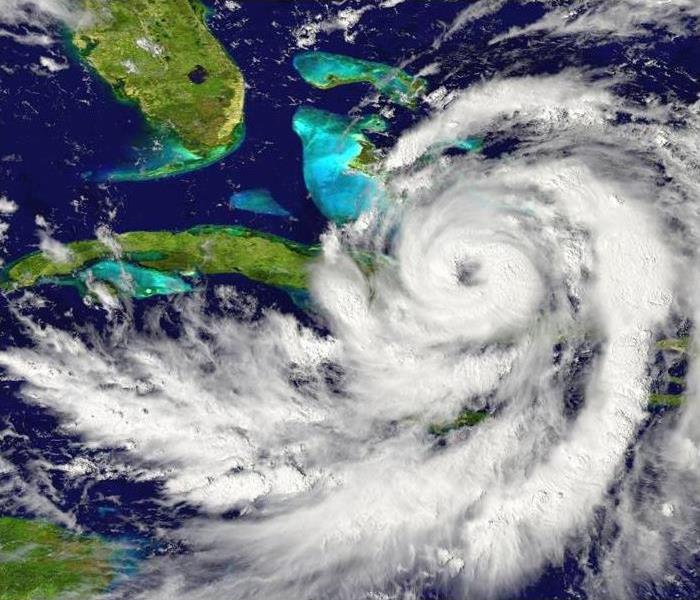 When a hurricane is approaching, it can take out electricity, homes and businesses for weeks.
When a hurricane is approaching, it can take out electricity, homes and businesses for weeks.
Is Your Family Prepared for a South Florida Emergency?
Are you a resident of South Florida? If you are, then you know how quickly hurricanes can hit – and the devastation they leave behind. SERVPRO of West Brevard, is a professional restoration company that is committed to bringing your home back to life after a disaster strikes. We’ve put together the top four tips that will help you get through South Florida’s risky hurricane season – and stay as safe as you can in the midst of a long hurricane season from June 1st to Nov 30th. Here’s what you need to know to stay ahead of the hurricane season:
Tip #1: Create a Emergency Preparation Kit
As hurricanes approach Palm Bay, FL, it can take out electricity, homes and businesses for weeks to months. You want to have at least a two-week supply of water for each person in your home. You also want enough non-perishable food to feed everyone in your home for at least two weeks. Put together a first aid kit as well in case anyone gets hurt. Your 911 response system may get knocked out, and you need to know how to triage.
Tip #2: Power Up in Expectation of Powering Down
Charge all your cell phones. By extra batteries to operate radios and flashlights or camping lighting, such as headlamps and lanterns. Try to avoid matches and candles, as this is just another way to cause a disaster, via a fire.
Tip #3: Settle on an Evacuation Plan
Make sure everyone in your family knows the plan for evacuating. Listen to officials. If you get separated, plan in advance of a safe place, you will meet. Develop a plan to get out of town and where will you go? Call friends and family who live far outside the hurricane's trajectory to make sure you can go to safe place. Stock up on gas in your car's tank and in gas-safe containers in case you can't find a gas station for many miles on your journey -- something that often happens when an extensive storm hits.
Tip #4: Board Up
If you do not have hurricane windows and doors, plan to protect your windows and doors with plywood from local home construction stores. Reinforce every vulnerable part of your house -- from door hinges to the roof. Professionals at your local home construction store can help you make the right decisions.
What To Do After Flooding
- Remove excess water by mopping and blotting.
- Wipe excess water from wood furniture after removal of lamps and tabletop items.
- Remove and prop wet upholstery and cushions.
- Place aluminum foil or wood blocks between furniture legs and wet carpeting.
- Turn air conditioning on for maximum drying in summer.
- Remove colored rugs from wet carpeting.
- Remove art objects to a safe, dry place.
- Gather loose items from floors.
What NOT To Do After Flooding
- Don't leave wet fabrics in place. Hang furs and leather goods.
- Don't leave books, magazines or other colored items on wet carpet or floors.
- Don't use your household vacuum to remove water.
- Don't use television or other household appliances.
- Don't turn on ceiling fixtures if ceiling is wet, and keep out of rooms where ceilings are sagging.
Three Things About Roof Damage Mitigation
1/31/2022 (Permalink)
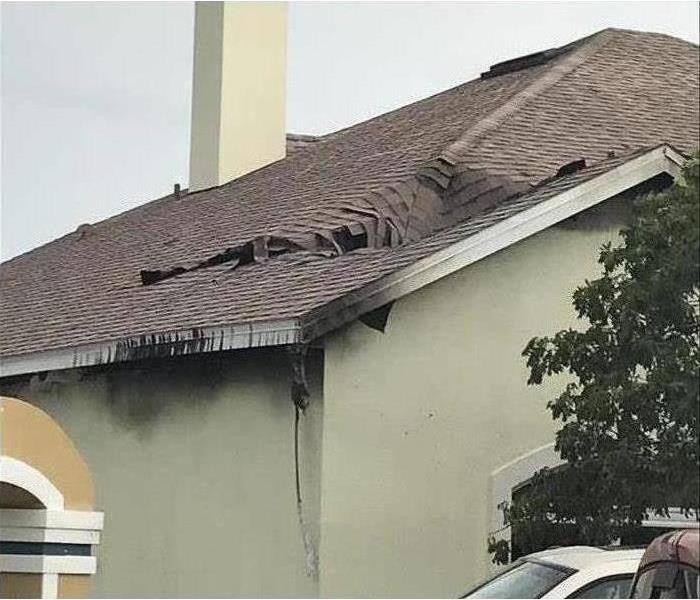 Shingle and structure damage to a roof.
Shingle and structure damage to a roof.
After a storm in Palm Bay, FL, your house might have some damage that you need to take care of. In some cases, this will include roof damage. Before repairs can begin, however, the restoration company might need to do some mitigation. The following are a few things that you should know about this process.
- When Do You Need Mitigation?
If you have roof damage that could become worse over time, then mitigation should be done right away. It will likely be required if you have missing shingles, cracks or holes in your roof. After an inspection has been performed, mitigation is the next step. Particularly if the damage is severe, it is important to get it done quickly.
- Why Do You Need Mitigation?
The purpose of mitigation is to keep any damage to your home from getting worse. There are several things that could happen before repairs begin that could make the process even more complicated and time-consuming. Even small cracks can allow water to get inside the house, which can damage your belongings or the structure of the building. It can contribute to the growth of mold as well. Holes in the roof can allow further wind damage and can even let in small animals. Mitigation will help prevent this.
- What Happens During Mitigation?
During the mitigation process, the cleanup and restoration company will cover any cracks or holes in the roof to prevent water, wind or debris from creating more problems. This is often done with a tarp, but more severe cases might require the use of wooden boards. Mitigation can sometimes include cleanup and sanitization as well.
If mitigation is not performed on the roof damage to your house, it could make the restoration process more difficult. When damage worsens, it requires more time and money to repair. Because of this, you should always have mitigation done as soon as you can.
How to File a Flood Insurance Claim
12/8/2021 (Permalink)
Steps To Filling a Flood Claim
The rain stopped, but the water level continued to rise. Flooding in Melbourne, FL, will always be a problem. The water ruined furniture, the carpet and seeped into the drywall. The house is in disrepair. You have flood insurance but are not sure how to file a claim. The steps listed below will get you on the right path to filing a flood claim and start the much-needed repairs on your home.
1. Report
Call your insurance agent immediately. Make sure to have on hand the following information:
- Name of the insurance company or agent
- Policy number
- Telephone number or email address to reach you at all times
An adjuster should contact you within 24 to 48 hours to schedule an appointment. Call your insurance agent if you do not hear from someone.
2. Document
The adjuster will want to see all the damage to the home. Separate the damaged items from the undamaged so that the adjuster will be able to find the best evidence. Take pictures of everything ruined, including walls, carpets, furniture and other items. Make a list of everything adding dates of purchase and value. Find receipts if possible.
3. Support
Complete a Proof of Loss statement. The Proof of Loss is the official document confirming that the amounts you claim are accurate. It should also include additional details or supporting documents you believe are relevant to the claim. File the Proof of Loss statement within 60 days of the flood. The National Flood Insurance Program and insurance company require this paperwork before making payment.
Filing an insurance claim after a flood can be both time consuming and stressful. The damage it takes on your pocketbook is another issue you would rather not worry over. Knowing the ins and outs of filing a flood claim can mean a faster way to get your money. A storm damage restoration specialist can make the process of filling out a flood claim a little easier.
Safeguarding Your Business From Storm Destruction
6/9/2021 (Permalink)
How to Fortify Your Building
When a major storm event such as a hurricane is barreling towards your business, time is of the essence in preparing your commercial building. Flood water from heavy rains can cause tremendous damage to an unsecured structure and force you to close your doors for weeks or months while you undergo an extensive restoration process. Protect your business in Satellite Beach, FL, from the devastation of a storm by following a few simple guidelines to fortify your building.
1. Watch the weather.
One of the most important steps in preventing a flooded building is also one of the simplest – pay attention to your local weather forecasts and take any severe weather or flash flooding alerts seriously. Use the advance warning to enact preventative measures like placing sandbags around the perimeter of your business and moving expensive electronic equipment to a higher level of the building.
2. Design an action plan.
When a storm is about to hit, every staff member needs to have a specific role in preparing your business to withstand the destruction. Assign tasks to each team member so nobody gets overwhelmed. For example, one person should be in charge of fortifying the building to keep out flood water, another person should take care of backing up important electronic data, and someone else should supervise a final evacuation drill.
3. Prepare for restoration.
Even a well-prepared business can sustain water damage if a storm is especially severe. That’s why it’s a good idea to have the contact information for a reputable commercial storm damage restoration company on hand in case you need professional assistance in the cleanup and repair process. Enlisting the help of an expert means you can reopen your doors faster than if you try to manage complex reconstruction yourself.
A storm heading towards your commercial building means you need to take immediate action in preventing flood water from destroying your livelihood. By staying calm and taking steps to safeguard your building, you can ensure your business will ultimately withstand the destruction of a severe weather event.
Five Preparedness Tips for Flooding
5/3/2021 (Permalink)
How to Prepare for the Possibility of Flooding
Storm season can certainly keep you on your toes. When you have a business in Viera, FL, it’s good to know how to prepare for the possibility of flooding. Here are five tips to help you be well prepared for anything a storm may send your way.
1. Have an Emergency Plan
A big part of preparing for flood damage is simply having a plan of action in place. Evacuation paths should be mapped, and those maps should be posted on every level of your building so that people know where to go in an emergency. Designate emergency responsibilities before the disaster occurs so that people know what is expected of them.
2. Waterproof Your Building
Even if your building is flooded during a storm, having a solid building envelope can lower your flood cleanup costs. Have your building inspected regularly to find cracks or spots that are worn so that you can get the necessary repairs.
3. Elevate Equipment and Furniture
Electrical equipment and furniture can both be damaged beyond repair during flooding. Elevate furniture, sockets, electrical panels, appliances and all wiring where floodwaters can’t get to them.
4. Have Sandbags Ready
A good way to stave off excess water is to put up barriers. Set sandbags near doors, windows and other vulnerable entry points to your building. Barriers may delay the flow of water enough that you can avoid storm damage altogether.
5. Update Your Insurance Coverage
It’s a smart idea to check your insurance policies periodically to make sure that all potential problems are covered. If you don’t have a policy that pays for services from storm cleanup experts, you may have to pay for a lot of damage out of pocket the next time a storm heads your way.
Flooding is a common occurrence when there is a storm in your area. By making sure your employees, your building and your insurance is adequately prepared, you can prevent a lot of damage and handle the problems that do occur with relative ease.
What should I do when my property in Viera is affected by water damage?
3/3/2021 (Permalink)
SERVPRO Will Get You Back into Your Home After Water Damage
When water damage impacts your home in Viera, FL immediately addressing the issue is important. Once the initial damage has occurred, water can make its way into the structure of your property. If not acted upon quickly, the result can be extensive structural damage coupled with the onset of mold and mildew. However, immediately reacting to the water damage can help limit secondary water damage. This will save you not only time and money, but also precious possessions. To expedite the remediation process contact a water damage restoration company like SERVPRO. Learn more about water damage and why attaining professional assistance is important by reviewing this short outline:
Water Damage: A Brief Overview
Water damage is the result when your property is impacted by a natural disaster such as a flood, fire, or tornado. Water damage can also occur due to household issues like leaky faucets or pipes that burst. Causing structural damage to your property because of unwanted water intrusion can generate a number of other challenges:
- Poor air quality
- Mold and mildew growth
- Humid atmosphere
- Unpleasant odors that permeate your ceilings, floors, and walls
- Damage or loss of furnishings, art, electronics and more
Mitigate the loss of possessions and structural damage by getting SERVPRO to begin water removal and cleanup as soon as possible.
Why You Should Call A Water Damage Specialist
Calling a specialist as soon as your property is impacted by water damage is important for many reasons. First, SERVPRO will perform a thorough assessment of your property to determine the nature and extent of the damage. This work empowers the specialists to develop a detailed, customized clean-up plan that will help optimize and expedite the restoration process. Additionally, SERVPRO can send multiple contractors to your property quickly to start the restoration process.
The Importance Of The Drying Process
After water pumps have removed the standing water, then vacuums, powerful air-moving machines, and dehumidifiers will eliminate the balance of water and moisture. With fast action and the right equipment, you can often lessen the need to replace hardwood floor, carpet, and walls. You can also minimize stains and bad odors that result from mold and mildew.
Acting immediately upon the onslaught of water intrusion is the most important step to take. Calling a team of professional water damage restoration experts like SERVPRO should be done right after reaching out to your insurance company. Here at SERVPRO, we're trained in offering a fast response that helps ensure that your home in Viera, FL is restored with lightning speed. "Like it never even happened." We're also pleased to provide all of our customers with 24/7 emergency services.
Locally Owned Company with National Resources
SERVPRO of West Brevard is locally owned and operated. When you have a water or flooding emergency, we’re nearby and ready to help. We take pride in being a part of the Brevard county community and want to do our part in making it the best it can be.
We proudly serve Melbourne, FL, Rockledge, FL, and surrounding areas.
Call us at: (321) 953-8600
Three Things You Should Know if Your Building is Damaged By Flood Water
2/26/2021 (Permalink)
During a storm in Palm Shores, FL, it is possible that your building may be damaged by flood water if the weather becomes severe. Because this is not quite the same as other water damage, you may be unsure of how to deal with it. The following is some information about this type of water that might be helpful to you.
1. Why is a Flood Different From Other Water Damage?
The reason that flood water is different from others is largely due to how it accumulates. While most water damage, such as that from leaks or broken pipes, comes from above, the water in a flood rises from the ground. As it does, it becomes category 3 water.
2. What is Category 3 Water?
When it comes to water contamination, there are three categories. Category 3 or black water, which includes water from a flood, has the highest levels of contamination. Because this water comes up from the ground, it mixes with dirt, debris and sewage. When this happens, it begins to carry waste, bacteria and harmful chemicals that can be hazardous to your health.
3. How Should You Handle It?
Because flood water is highly contaminated, it is not a good idea to try removing it on your own. Instead, you should hire a professional to thoroughly clean and sanitize the building. Any food or beverages that have been in contact with this water should be thrown away as they are no longer safe to consume. Protective gear should be worn at all times while handling category 3 water.
If your building has been affected by water or storm damage of any kind, you should have it taken care of right away to prevent it from becoming worse. If allowed to sit, moisture can contribute to mold growth and can cause materials to weaken. A professional cleanup and restoration company can sanitize the area, perform necessary repairs and salvage many affected items.
Worried about flood damage affecting your building? Here’s What You Need to Know
9/28/2020 (Permalink)
 Install storm shutters that are easy and quick to secure
Install storm shutters that are easy and quick to secure
What To Do When A Storm Is Headed Your Way?
Running a business in West Eau Gallie, FL, requires one to wear many hats, one of which is disaster prevention. When a storm is brewing on the horizon, what can you do to avoid or reduce flood damage from happening? Here’s a couple of tips to get you started:
Get to Know Your Local Area
Some locations are more susceptible to flooding than others, such as neighborhoods located in a valley, at the bottom of a slope or below sea level. This may seem self-explanatory and painfully obvious but you’d be surprised at how many business owners are unaware of how their location could impact their company in the event of a natural disaster. Find out if you are in a flood prone area and plan ahead.
Plan and Prepare with the Right Equipment
There are tons of modern equipment out there that are designed to minimize the impact of flood damage on your building. When in doubt, go with the tried and tested classic: the good ol’ sand bag. If you’re feeling more adventurous, there are plenty of alternatives out there that are reusable and are easier to transport. However, be sure to do your research before you commit to a purchase. Install storm shutters that are easy and quick to secure and check your electrical equipment to ensure they will be out of reach of flood waters.
Check Your Surroundings
Perhaps the most important part of avoiding storm damage is to look outside your immediate perimeter for things that may encourage floods. This means looking at street drains and storm grates and making sure that they are free of leaves and other debris that inhibit the flow of water. This is easily overlooked in the rush of preparing for an incoming storm and can have a disastrous impact on your safety.
If the weather gets the best of you, there are flood remediation experts in your state that can get your business up and running in no time. Flood damage is no joke, but if you are well prepared you can easily reduce the impact that a storm can have on your business.
How to Prepare for Spring Storms
3/3/2020 (Permalink)
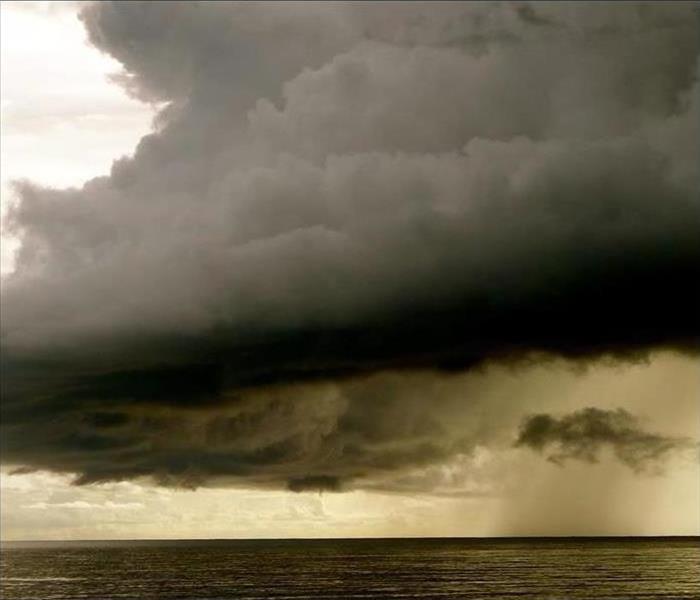 Gulf of Mexico waters are freakishly warm, which could mean explosive springtime storms for Florida and surrounding areas.
Gulf of Mexico waters are freakishly warm, which could mean explosive springtime storms for Florida and surrounding areas.
“Spring is the first kiss of summer.” -Anonymous
Spring has arrived and the excitement of summer, warm sun rays, and hot days are just around the corner. Although spring represents the end of winter and new beginnings, it also consists of spring showers, thunderstorms, and unpredictable weather, which can cause severe problems if not properly prepared. Since Florida weather already seems irregular, how do you prepare for unexpected spring storms, what do you do in the event of severe weather conditions, and what is needed to stay safe among hazardous conditions following a storm?
Preparing for the unknown can save lives, so we have provided these important preparation steps.
Organize an Emergency Plan
Putting a plan in place can potentially save you and your family’s lives. But one plan may not work for every type of severe weather condition, such as thunderstorms, floods, and tornadoes. For instance, your evacuation plan for a tornado should be different than if a flood occurred and the streets are two feet under water. Each emergency plan prepared needs to include a map of your home, routes to safety, and an emergency shelter or destination. Being prepared for each type of life-threatening weather condition is important in keeping your family safe before and after a disaster.
Go Inside When You Hear Thunder
According to the American Red Cross, lightning strikes are the leading killer. Every year lightning has killed more people than hurricanes or tornadoes. When you hear thunder, loud or soft, go inside! With lightening strikes following thunder, every lightening flash is a potential killer.
Protect Your Electronics
To avoid damaging your electronics during a storm, you should plug all electronics into surge protectors. By doing this, the surge protector protects your electronics from burning up due to voltage strikes. If any electronics are not safeguarded by surge protectors, unplug the devices before a storm.
Keep an Emergency Kit
Because severe weather can be unpredictable, you need to put together an emergency kit beforehand. When preparing an emergency kit you should include a first aid kit, a 3-5 day supply of water, nonperishable food, personal hygiene items, blankets or sleeping bags, flashlights, a battery-operated radio, and extra batteries. Make a list of important information to have on hand, like your insurance and utility company’s phone numbers. In case you get stuck in severe weather on the road, keep a second emergency kit in your car. Additional resources on an emergency kit can be found at: https://www.ready.gov/kit.
We at SERVPRO believe that by failing to prepare, you are preparing to fail.
5 Mistakes To Avoid With Flood Cleanup
8/30/2019 (Permalink)
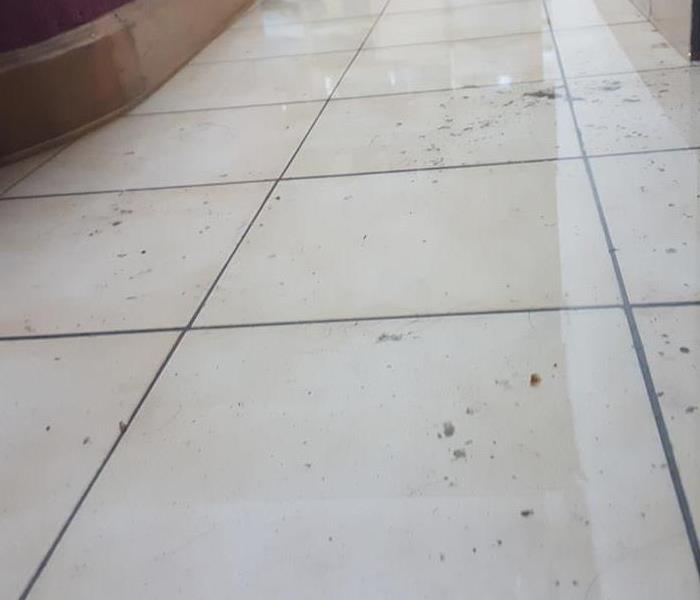 SERVPRO of West Brevard is here to help after water damage.
SERVPRO of West Brevard is here to help after water damage.
When flood water makes its way into your Melbourne, FL home the thought of making repairs may seem overwhelming. However, there are few things that you won't want to do in such a situation. Here are five mistakes you should avoid when restoring your residence.
1. Don’t Wait To Make Repairs
One important thing to remember with a flooded home is not to wait to make repairs. Taking care of any restoration needs quickly can help prevent future problems.
2. Don’t Try To Do it All Yourself
Another thing to remember is not to try to perform the clean up all by yourself. A local flood damage restoration service often has the tools and equipment necessary to perform the job safely and quickly, and ensure the repairs are up to coding standards.
3. Don’t Ignore Safety Recommendations
When dealing with flood water it's important to observe all the safety recommendations. This may include reading the instructions for any equipment that you intend to use, as well as wearing proper safety gear such as masks, boots, coveralls, gloves, and even shoe covers.
4. Don’t Think Cleanup is Done Once the Water is Gone
Also remember that even though the flooding has been removed, the cleanup process itself may not yet be done. Water damage can persist even after the water is gone, and it's important to have an inspection done to look for any areas where structural integrity might be compromised, or mold may have set in, in order to get these properly remedied.
5. Don’t Forget To Talk To Your Insurance
It's also important to remember to talk to your insurance company. Your homeowner's policy may contain coverage for storm damage, and in many cases they may even recommend a restoration service.
When it comes to removing flood water and restoring your home, it's important not to wait to make any repairs. Don't try to do it all yourself, follow safety recommendations, and remember that even though the water is gone clean up may not be completed. Also, don't be afraid to talk to your insurance as they may be able to help.
The 2014 National Preparedness Month Be Safe Viera!
9/14/2014 (Permalink)
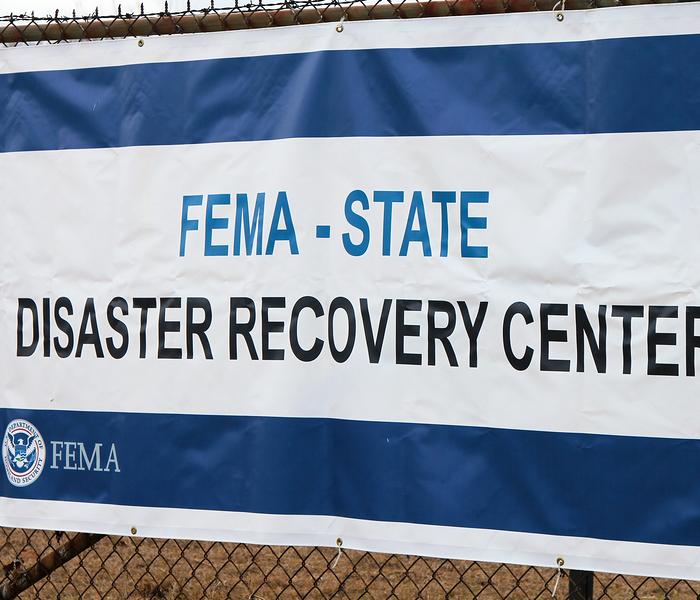 SERVPRO of West Brevard supports the 2014 National Preparedness Month awareness campaign, be prepared in Palm Bay be safe!
SERVPRO of West Brevard supports the 2014 National Preparedness Month awareness campaign, be prepared in Palm Bay be safe!
NPM 2014 Digital Engagement Toolkit
SERVPRO of West Brevard and the National Preparedness Community is where we connect and collaborate on emergency preparedness. Use us to empower yourself to prepare and to coordinate preparedness activities with your family, neighbors, co-workers, and those with whom you may study or worship. We contribute what we can about what we know; ask for what we need; keep doing what is working; communicate about what is not working, and when possible, offer suggestions towards solutions. When we are connected and collaborate, we are more effective and efficient at educating and empowering ourselves to prepare for disasters and emergencies.
The Ready Campaign established four universal building blocks of emergency preparedness: Be informed, Make a Plan, Build a Kit, and Get Involved. America’s PrepareAthon! builds on this foundation by encouraging millions of Americans to focus on a simple, specific activity that will increase preparedness.
America’s PrepareAthon! a new national community-based campaign for action that focuses on increasing emergency preparedness through hazard-specific drills, group discussions and exercises. National PrepareAthon! Days are held every spring and fall. During National Preparedness Month we ask you, your family, community and workplace to take action by planning a National PrepareAthon! Day on or around September 30th. We recommend using digital media tools as a way to promote National Preparedness Month, September 1st-30th.
The 2014 National Preparedness Month theme is: “Be Disaster Aware, Take Action to Prepare”.
If you are in Melbourne, Palm Bay, Viera, West Melbourne, Malabar, Satellite Beach, Melbourne Beach, Indialantic, Indian Harbour Beach, and surrounding areas and are in need of information on Disaster Assistance, please call us at (321) 953-8600 or see http://www.fema.gov/apply for help.
Production Crew visits Atlanta, GA
1/15/2014 (Permalink)
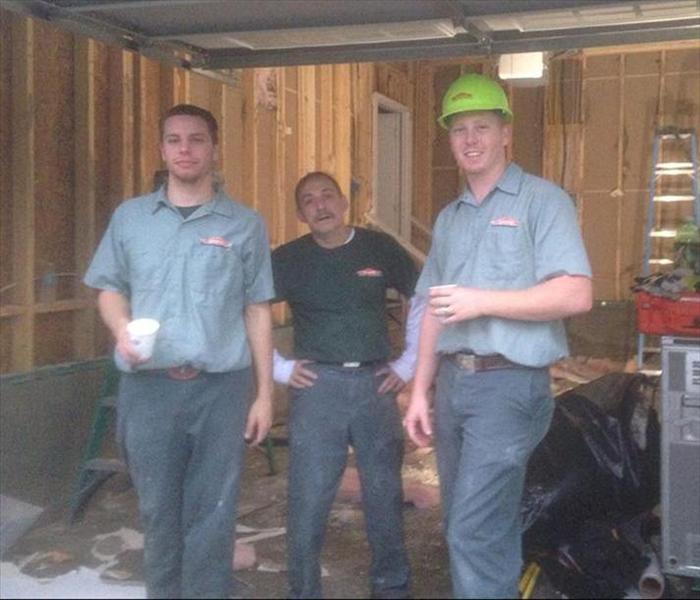 (Left to right) Mike, Jesse, and Robby taking a quick break.
(Left to right) Mike, Jesse, and Robby taking a quick break.
SERVPRO of South Brevard's crew is up in Atlanta, GA for a few weeks helping them recover from burst pipes caused by the recent cold! They have been extremely busy and are taking a quick break before they finish demo in an affected house!






 24/7 Emergency Service
24/7 Emergency Service


